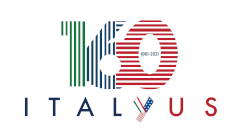Science – Space
Scientific research today requires increasingly complex structures and cutting-edge technologies. As a result, international collaborations are becoming a common tool for reducing the costs of large-scale and long-term projects, sharing risks and increasing expertise.
Italy and the United States boast a long-standing cooperation of the highest level in the scientific field, which saw significant growth after the Second World War, also thanks to the connection with Italian scientists who moved to the United States after the introduction of racial laws. The current legal basis is the Scientific and Technological Cooperation Agreement signed in Rome in 1988, subject to three-year review (the next will take place in 2022). The Agreement covers the areas of greatest interest for both countries and all major research agencies and institutions.
The Embassy plays a role of connecting and enhancing the work of the many Italian scientists, research bodies and various institutions in the U.S. The presence in the United States of over 15,000 Italian researchers and a growing number of Italian professors in the American universities represent a precious resource and an opportunity to strengthen bilateral cooperation.
In the field of physics, Italy and the United States have long had close relationships in the research of elementary particle, nuclear and astro-particle physics. Several U.S. teams collaborate in the activities of the Italian laboratories of Gran Sasso, as well as dozens of Italian researchers are involved in projects concentrated at the Fermi Lab in Chicago and at the Jefferson Lab in Virginia. The collaboration of the European Virgo project with the similar U.S. LIGO experiment in the field of gravitational waves continues, crowned by the common announcement of their discovery, carried out in Washington, D.C. in 2016.
In the field of biomedicine, over the years, Italian universities and research bodies of the MUR have entered into various framework agreements, conventions and research projects with American universities and research centers, which represent about 7% of all international agreements signed by Italian entities in this field. To these, the research agreements stipulated between various Scientific Research and Care Institutes (IRCCS) and U.S. institutions must be added. Important cooperation initiatives among research institutions are taking place in the fields of chemistry and nanotechnology.
In the aerospace sector, in addition to the historic partnership with NASA born in 1962 with the signing of the agreement for the launch of the San Marco, the first Italian satellite, the Italian Space Agency has recently given birth to new collaborations in the emerging world of Space Economy. The strong Italian support for the creation and management of the International Space Station, launched in 1984 and completed in 2000, was important. In this context, Italian astronauts carried out flight missions and scientific experiments. In 2020, Italy decided to participate in the Artemis mission to bring astronauts back to the Moon. There are also many active collaborations for the exploration of outer space and Mars. From 2021, European and Italian astronauts will resume launches from American territory. Italian scientists and companies have collaborated in the construction of the Hubble Telescope and the future James Webb Space Telescope, launched in October 2021.
The Nobel prizes won by Italian physicists who moved to the United States are worth of mention, such as Enrico Fermi, to whom the largest American laboratory is dedicated, Emilio Segrè (Nobel in 1959 for the discovery of the antiproton) and Riccardo Giacconi (Nobel in 2002 for the discovery of cosmic sources of X-rays). In 1974 Enrico Bombieri of Princeton University won the Fields Medal, considered the Nobel Prize for mathematics, and in 2012 Silvio Micali won the Turing Prize, considered the Nobel Prize in computer science. In medicine, other Nobel Prizes were won by Italians who continued their research in the United States, such as Renato Dulbecco (in 1975 for his studies on viruses that can cause cancer) and Mario Capecchi (in 2007 for his genetics studies). Equally important is the collaboration of Rita Levi Montalcini (Nobel Prize in 1986 for the discovery of the nerve fiber growth factor) with Washington University of St. Louis, where she worked and lived for thirty years, and was a member of the National Academy of Sciences. For their part, many American winners have benefited from important collaborations by Italian researchers.
To celebrate the 160th anniversary, two main events are planned.
On the occasion of the Italian Research Day in the world, a collaboration was established with the prestigious National Academy of Sciences for an event on the collaboration between Italy and the USA in the field of urban sustainability, as part of the Nobel Prize Summit, with a focus on energy transition and climate change. This will enhance the leading role assumed by Italy in 2021 at the Presidency of the G20 and as co-partner with the United Kingdom of the United Nations Conference on Climate Change (COP26).
The second event on the program is the annual meeting of the Italian Scientists and Scholars in North America Foundation (ISSNAF), during which career awards are awarded to senior researchers, and young Italian scholars are acknowledged who have distinguished themselves in all fields of research. Since 2020 a custom award has been promoted by the Embassy on a significant scientific and research topic for the current year. ISSNAF is the most important network of Italian researchers in North America by numbers and geographical spread, founded over a decade ago on the initiative of the Embassy, and whose Advisory Board is chaired by the Ambassador of Italy in Washington, D.C.
Alongside these themes, the Climate & Environment trend will be further promoted, in light of the aforementioned Italian role in the G20 and COP26.


